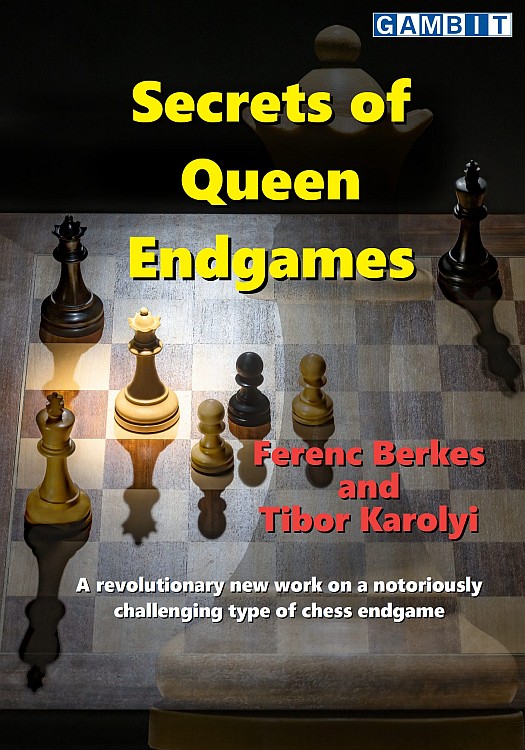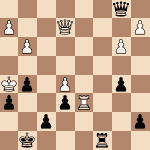GM Ferenc Berkes and IM Tibor Karolyi, both of Hungary, are the authors of Secrets of Queen Endgames. As the foreword by GM Pentala Harikrishna notes, “it is a book about queen and pawn endgames.”

No rooks, no minor pieces
The focus of Secrets of Queen Endgames is just queens, kings, and pawns. Starting diagrams may also show rooks or minor pieces but those are traded off before analysis begins. The authors write:
Composers spend many hours to create ‘foreplay’ in their studies — that is, interesting tactical play leading to the actual queen endgame that we are focusing on. Since simply deleting some of their artistic work would be cruel to them, as a compromise we shall generally follow the policy of showing the study from the start, but only analysing in detail once a queen ending is reached.
Sometimes a pawn is underpromoted, most often to a knight when promoting to a queen would stalemate. Other than the exceptions mentioned, expect just kings, queens, and pawns in this book.
Advanced Chess Instruction
Secrets of Queen Endgames is for advanced chess players. Some necessary background knowledge includes skewers, pins, discovered checks, perpetual check, and which king and pawn endgames are wins and draws. Let’s analyze each of these prerequisites.
Skewers are important because one theme is the attacker promoting its pawn to a queen then skewering the defender’s king to its queen. Pins come up because the defender’s queen often pins the attacker’s pawn to the attacker’s king. When pinned, the pawn cannot advance toward its promotion square. Discovered checks happen by moving one’s king to unleash the checking power of one’s queen. Perpetual check, formally known as three-time repetition of position, is a common drawing idea. On each move, one must know the outcome of trading a queen for a queen. Will the post-trade king and pawn endgame be favorable?
Organization
Download the book’s table of contents and a sample from the website for Secrets of Queen Endgames. As its table of contents shows, for the queen and pawn versus queen endgame, each pawn on each rank and file gets its own analysis. For example, queen and rook pawn on its second rank versus queen, queen and rook pawn on its third rank versus queen, queen and knight’s pawn on its second rank versus queen, etc., up to the seventh rank for each pawn.
A summary table of winning percentages, based on a pawn’s rank and file, is provided. For example, an a-pawn on the 7th rank and queen is likely to win 24% of the time against a queen. It’s not clear if that summary is based on tablebases or on actual games between grandmasters.
The book features both endgame studies and the authors’ analysis of queen endgames played, in most part, by grandmasters. Particularly helpful are guidelines at the beginning of sections, such as shelter one’s king from checks behind a pawn (or pawns) and have a more active queen than one’s opponent.
A Polgar Win
In Secrets of Queen Endgames, the over-the-board endgames of Hungarians are well represented, and those of women are under-represented. I found only one woman’s name in the index of players. That woman is Hungarian and her name is Judit Polgár. The authors begin their analysis of Polgár’s game after her 54th move, which is the beginning of a queen and two pawns versus queen endgame.
